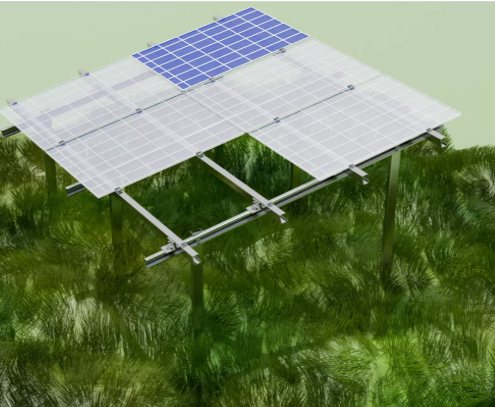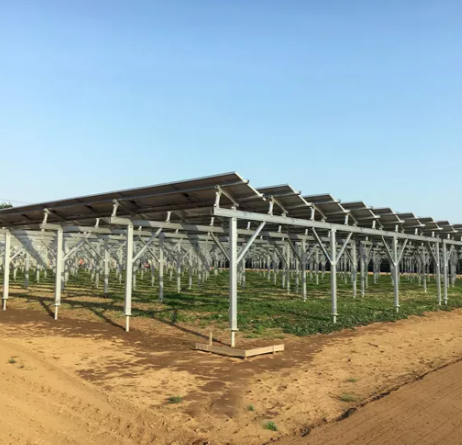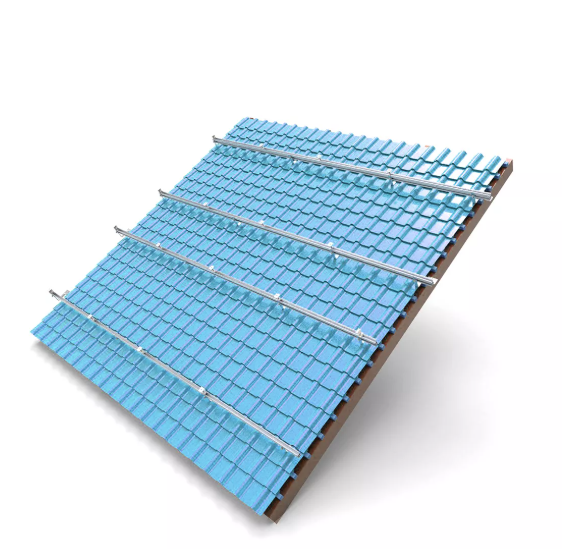


Views: 0 Author: Site Editor Publish Time: 2025-09-05 Origin: Site









Photovoltaic power stations are becoming essential in the fight against climate change. As the world turns toward sustainable energy, solar power is in high demand.In this post, we’ll discuss effective strategies for increasing power generation in photovoltaic systems. From system design to advanced technologies, you'll learn how to optimize solar energy production.

A photovoltaic (PV) power station is a system that converts sunlight into electricity using solar panels. It’s made up of several components working together to harness solar energy. These include solar panels, inverters, and storage systems. Solar panels capture sunlight and convert it into DC (direct current) electricity. Inverters then transform this DC power into AC (alternating current), which can be used by households and businesses. Some systems also include storage solutions, such as batteries, to store excess energy for later use.
The core of PV power generation lies in the photovoltaic effect, which occurs when sunlight strikes the surface of solar cells, exciting electrons and creating an electric current. The solar panels are made from semiconductor materials, often silicon, which allow these electrons to flow freely when energized by sunlight. The electricity produced is DC, which is not suitable for direct use in most homes or businesses. That's where inverters come in. They convert the DC power into usable AC power, ready to power appliances or be sent back to the grid.
Maximizing the power generation of PV systems offers both economic and environmental benefits. The more efficient your solar system is, the more electricity it can produce, reducing reliance on traditional energy sources. This not only helps lower electricity bills but also minimizes your carbon footprint, contributing to a greener planet. The rise of renewable energy sources like solar is crucial in combating climate change and reducing greenhouse gas emissions.
The efficiency of solar panels is influenced by several factors. Materials play a big role, with high-quality silicon panels being more efficient than lower-grade ones. The age of the panel also matters, as older panels degrade over time, reducing their ability to generate power. Dust and dirt accumulation can block sunlight, reducing efficiency.
To boost power generation, consider high-efficiency panels designed with advanced materials. Panels with higher conversion rates (20% or more) typically perform better in various environmental conditions, ensuring better energy output over the system’s lifespan.
The angle and orientation of your panels are crucial for maximizing energy production. Solar panels should face the sun directly to collect the most sunlight. In the northern hemisphere, panels should generally face south, while in the southern hemisphere, they should face north.
Install the panels at an optimal angle, usually around 15 to 30 degrees from the horizontal, depending on your location. Adjusting the angle throughout the year can further optimize sunlight exposure and boost overall generation.
Even partial shading can significantly reduce a panel's output. Shading from trees, buildings, or even dirt on the panels can cause a sharp drop in energy production.
To minimize shading, carefully consider the placement of panels. Avoid placing panels where they might be shaded during peak sunlight hours. Using microinverters instead of string inverters can help, as microinverters allow each panel to operate independently, reducing the impact of shading.
Temperature can affect the performance of solar panels. While panels need sunlight to work, high temperatures can lower their voltage and overall output. Solar panels typically operate best in cooler temperatures.
To manage this, consider using cooling systems or installing panels in locations with good airflow. Proper ventilation can help reduce heat buildup and maintain the panel's efficiency.
Dirt, dust, and debris can build up on solar panels, blocking sunlight and reducing their efficiency. Over time, even small amounts of dirt can significantly impact power generation. Keeping the panels clean is essential for maintaining peak performance.
To clean your panels, gently rinse them with water and use a soft cloth or sponge to wipe away dirt. Avoid harsh chemicals that can damage the surface. Regular cleaning, especially after storms or dusty conditions, can help ensure optimal energy production.
Maximum Power Point Tracking (MPPT) is a technology used to ensure that your solar system operates at its maximum efficiency. MPPT adjusts the electrical operating point of the solar panels to match the inverter’s capacity. It continually tracks the optimal voltage and current at which the panels produce the most energy.
MPPT charge controllers help increase power generation by ensuring that the system is always running at the most efficient operating point. This allows for higher energy yields, especially under varying weather conditions and times of the day.
Properly sizing your photovoltaic system is key to maximizing power generation. The number of solar panels you install should match the inverter’s capacity. An undersized system may not produce enough power, while an oversized system could result in wasted energy and higher costs.
It’s important to accurately assess your energy needs and match the solar array to your power consumption and inverter capacity. A well-sized system ensures that you get the most out of your investment.
If your photovoltaic system is old or underperforming, it may be time to upgrade or retrofit it. Over time, panels degrade, and newer technologies can offer more efficient energy production. Upgrading components like the inverter or adding additional panels can boost performance.
Retrofitting your system can involve replacing outdated parts or integrating new technologies like microinverters or battery storage. These upgrades can help increase power generation and extend the life of your system, ensuring long-term energy savings.

A solar tracking system automatically adjusts the angle of solar panels to follow the sun’s movement throughout the day. This increases the amount of sunlight the panels capture, improving overall energy production. By maximizing sun exposure, tracking systems can boost energy generation by up to 25% compared to fixed systems.
There are two main types of tracking systems: single-axis and dual-axis. Single-axis trackers move along one axis, typically from east to west, while dual-axis trackers can adjust on two axes, optimizing sunlight capture throughout the day. Fixed systems are cheaper but less efficient, as they can’t adjust to the sun’s position.
Hybrid systems combine photovoltaic (PV) and wind power, providing a more reliable and consistent energy supply. By using both solar and wind energy, these systems can take advantage of the strengths of each source. Solar energy is abundant during the day, while wind energy often picks up at night or in different weather conditions.
Combining these renewable sources helps reduce the reliance on a single energy form, ensuring that energy generation remains steady even during low-sunlight or calm-wind periods. This integration makes hybrid systems ideal for areas with fluctuating weather conditions.
Energy storage systems, like batteries, are essential for maximizing the power generated by photovoltaic systems. They store excess energy produced during the day for use at night or during cloudy periods, ensuring a continuous power supply. This helps mitigate the issue of solar energy’s intermittent nature.
With a good storage solution, you can store enough energy to meet your needs during non-sunny hours, increasing the efficiency and reliability of your solar power system. Popular storage systems include lithium-ion batteries, which are efficient, durable, and easy to maintain.
Choosing the right inverter is crucial for maximizing energy conversion efficiency. Inverters convert DC electricity generated by solar panels into AC electricity for use in homes or businesses. An inverter’s efficiency affects the overall performance of the system, so it’s important to select an inverter with a high conversion rate.
Additionally, regular maintenance of the inverter is essential to ensure it operates at peak efficiency. Keep it clean, check for any wear and tear, and make sure it’s operating within the correct temperature range to avoid energy losses.
Weather conditions can have a major impact on solar energy production. Cloud cover, rain, and dust storms can block sunlight, reducing the amount of energy generated by photovoltaic systems. Solar panels perform best in direct sunlight, and any form of weather disruption can decrease their efficiency.
To mitigate these challenges, consider using high-performance panels that are more resilient to dust and other environmental factors. Hybrid systems, combining solar and wind power, are another solution. Wind energy often picks up when sunlight is low, helping maintain a more consistent energy generation.
System failures and downtime can cause significant energy losses. If a photovoltaic system is down, no power is generated, which can lead to increased energy costs and wasted potential. Regular maintenance and monitoring are essential to avoid such breakdowns.
Routine checks, such as cleaning the panels, checking the inverter, and inspecting wiring, can help identify potential issues before they cause a failure. Using monitoring systems allows you to track performance in real-time, so you can quickly address any problems that arise.
Upgrading a solar power system can require a significant initial investment, but the long-term savings are often worth it. More efficient systems generate more power, which leads to lower electricity bills over time. Additionally, advancements in technology mean that newer systems are more reliable and can provide better performance.
There are also government incentives, tax credits, and subsidies available to help offset the costs of upgrading or installing photovoltaic systems. These financial incentives can significantly reduce the upfront costs, making it easier to transition to a more efficient system.
The field of photovoltaics is rapidly evolving. Some of the latest advancements include bifacial panels, perovskite cells, and transparent solar panels.
Bifacial panels capture sunlight from both the front and back, increasing energy generation by utilizing reflected light from surrounding surfaces. Perovskite cells offer a more affordable and efficient alternative to traditional silicon-based panels, potentially revolutionizing the industry. Transparent solar panels can be integrated into windows, allowing buildings to generate energy without sacrificing natural light.
These innovations have the potential to significantly boost energy production, making solar power more efficient and accessible for a variety of applications.
A smart grid is an advanced electrical grid that uses digital technology to monitor and manage the flow of electricity. It can integrate renewable energy sources like photovoltaic power stations, optimizing their energy distribution.
By connecting PV systems to a smart grid, excess energy can be stored or distributed more efficiently. For example, during peak sunlight hours, the grid can store surplus energy and distribute it during times of low sunlight. This integration helps balance supply and demand, ensuring that energy generation is used in the most efficient way possible.
Smart grids enable a more dynamic energy distribution system, reducing waste and improving overall grid reliability.
To maximize power generation from photovoltaic systems, focus on key strategies like panel efficiency, optimal installation, and advanced technologies. Regular maintenance, using MPPT, and system upgrades also play a vital role.
Evaluate your current system and consider these practices to boost energy production and reduce costs. By implementing these tips, you can make your solar power system more efficient and sustainable.
A: To improve solar panel efficiency, use high-efficiency panels and optimize installation angles for maximum sunlight exposure.
A: High temperatures can reduce panel efficiency by lowering voltage. To manage this, ensure proper ventilation or use cooling systems.
A: Yes, shading can significantly reduce energy output. Minimize shading by positioning panels properly or using microinverters.
A: MPPT (Maximum Power Point Tracking) optimizes the energy harvest by adjusting the operating point of panels to match the inverter’s capacity.